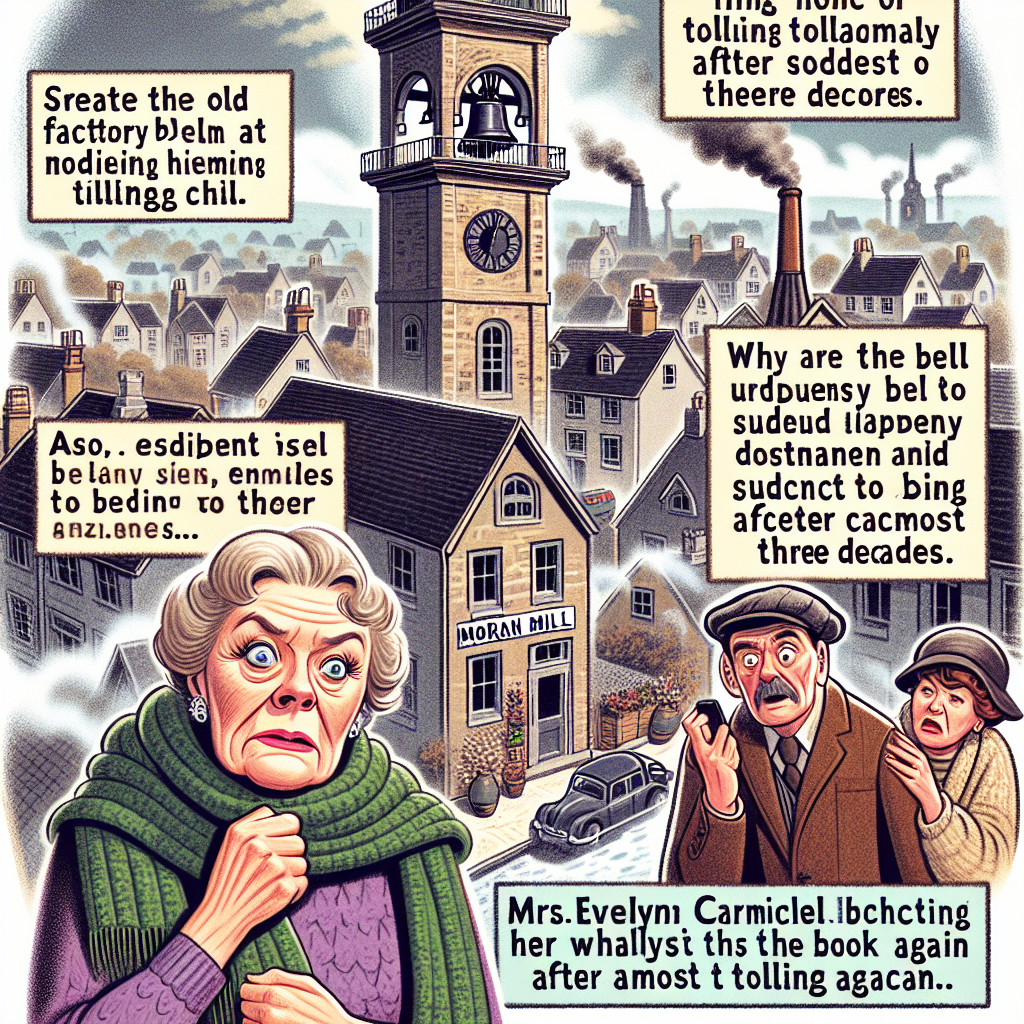**The Unseen Toll: Chesterburgh’s Silent Mill Bell Speaks Again**

They say you can’t unring a bell. In Chesterburgh, it turns out, you can’t quite silence one either. The old factory bell atop the Moran Mill, dormant for nearly thirty years, began tolling—without explanation—over the past fortnight. The clanging cuts through the morning fog and the evening chill, as unexpected and unwelcome as a sudden downpour in June. No official word has come down from the town hall, leaving residents shifting uneasily between nostalgia and suspicion.
The Moran Mill bell is a fixture as old as most living memory here. Once the heartbeat of the town’s industrial age, its clang marked shift changes for generations of workers. When the mill shuttered in ’93, the bell fell silent — a decision as symbolic as the factory’s rusting husks now hidden behind ivy and barbed wire. To hear it toll again, unscheduled and unexplained, is to hear a ghost stirring.
I first caught wind of the sound on a cold morning last week, when Mrs. Evelyn Carmichael, keeper of the bookshop two blocks down Main, called with a breathless, “You’ve got to hear this.” I wandered over, my notebook ready, expecting perhaps the usual: some loose metal, a prank, or an overzealous restoration project.
Instead, there was the bell: loud, resonant, stubborn. It chimed for no more than five minutes before falling silent, as abruptly as it started. Mrs. Carmichael, clutching her shawl tightly, looked unconvinced. “It’s like the mill’s trying to tell us something. Maybe it’s not ready to die just yet.”
Town officials have been tight-lipped. The mayor’s office issued a terse statement promising “an investigation into the source of the unusual bell ringing,” offering no timeline and no clues. Meanwhile, rumors have seeped through Chesterburgh’s cracked sidewalks like underground water—some say the bell is malfunctioning due to age; others whisper about secret midnight gatherings inside the mill’s shadowy walls.
Chesterburgh’s history with the Moran Mill is layered, complex. It’s not just a building; it’s a symbol. For older residents, it stands for a time when the town thrummed with purpose, jobs, pride. For the young, it’s a relic, half-forgotten, pit stop for curious urban explorers or spray-paint artists applying their urban signatures. And for the town government? Likely an inconvenient reminder of a past they’d rather forget—or reshape.
Along the cracked pavement of Elm Street, near the mill’s southern entrance, I met Tom Wilkes, a retired line worker who clocked more years inside those walls than I have in this town. His eyes were clouded with equal parts memory and something more guarded—resignation, maybe.
“The bell never rings without cause,” he said, voice low, laden with a hint of belief that bordered on reverence. “It was a warning system once, sure. But it also kept us honest. Knowing it would ring out if something was off—that kept things straight.”
“So what’s it ringing for now?” I asked.
He shrugged, lips tight as old leather. “That’s the question, isn’t it? I don’t reckon anyone knows. Maybe it’s just the building settling, or maybe someone’s trying to wake us up.”
Walking back through the increasingly indifferent bustle of downtown, I couldn’t help but mull over Tom’s words. The bell’s voice is an unwelcome visitor in an era of quiet redevelopment plans and carefully managed public relations. Chesterburgh has been courting new businesses, courting tourists, all in an effort to rewrite its post-industrial identity. The mill stands in contradiction: a heavy finger pointing at the past amid the bright pamphlets touting progress.
The oddity of the bell isn’t just about sound. It’s about memory and meaning. The mill’s murmur unsettles the slick narrative of growth, prosperity, and inevitability. It punctuates the gaps in the official story—the environmental struggles, the layoffs, the decades-long decline—pieces conveniently glossed over in town
